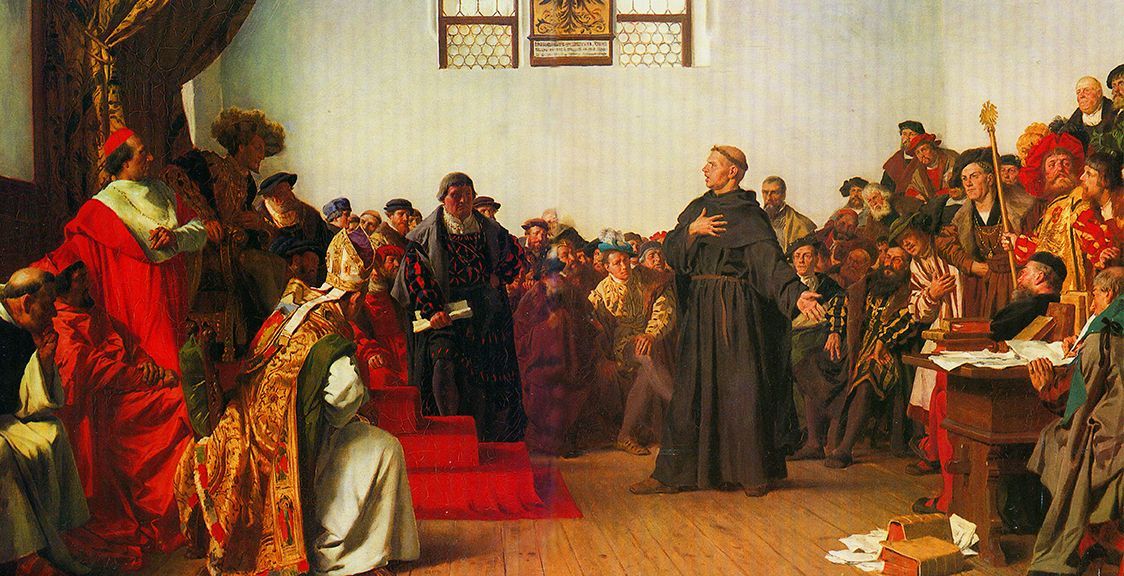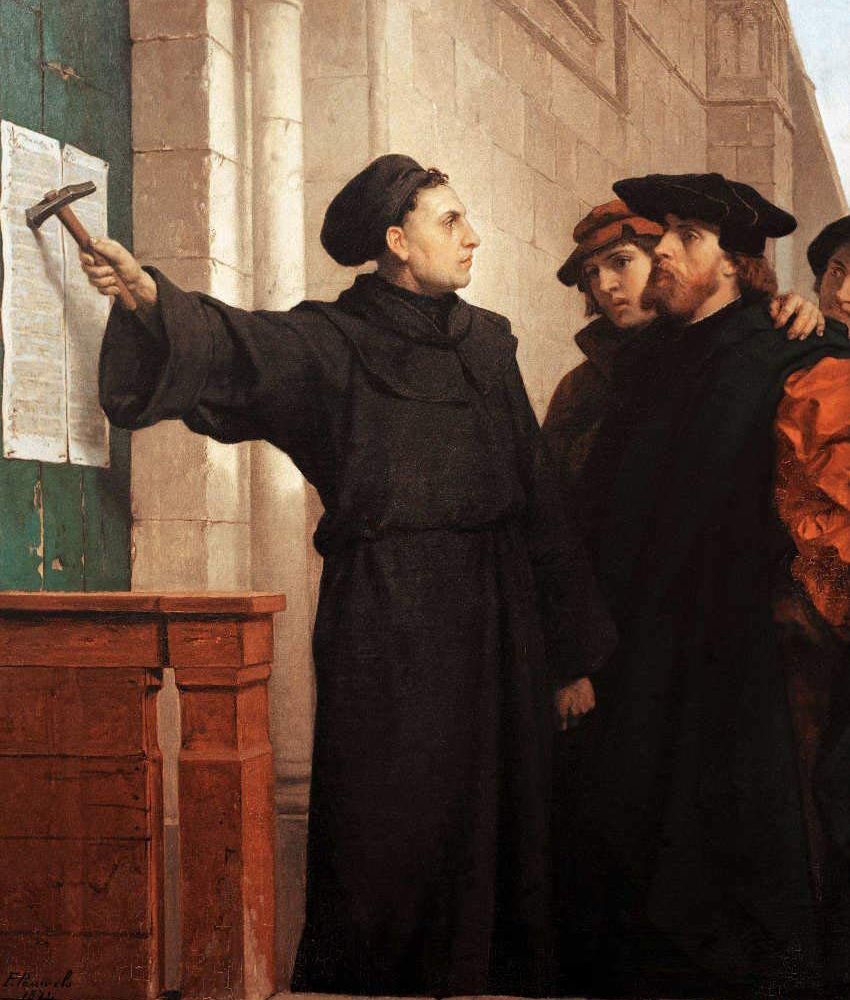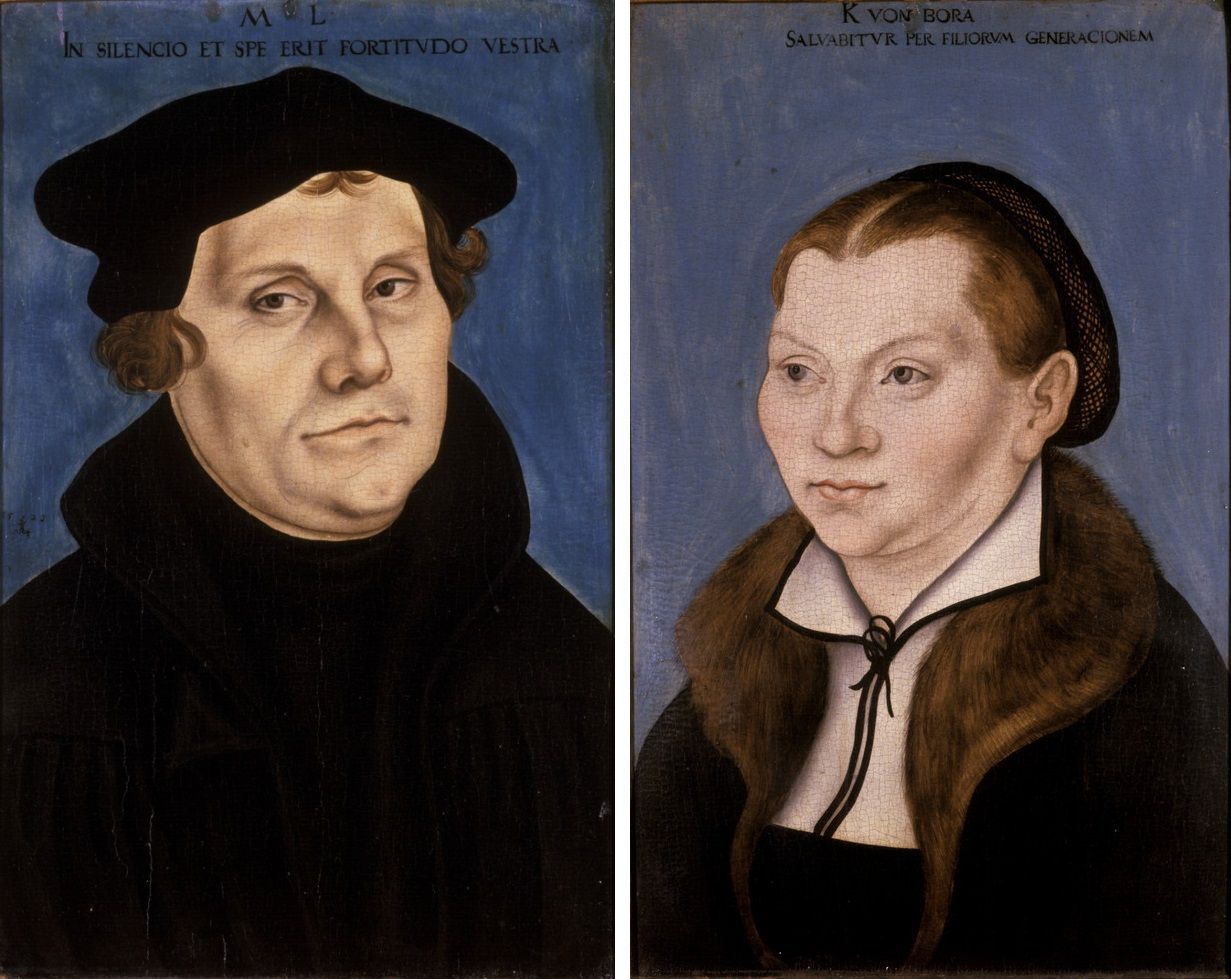Martin Luther and the Reformation

Martin Luther was a key figure of the Reformation of the church, which was sparked when Luther nailed his 95 Theses to the door of the church in Wittenberg in Germany on October 31st, 1517.
Luther was born in Eisleben, Germany in 1483. He initially studied to become a lawyer. While returning to university, he was caught in a violent thunderstorm. Fearing for his life, he cried out “Save me, St. Anne and I will become a monk!”. True to his word, he entered the monastery and became a monk and, later, a priest.
Luther tried to be a good monk, but he worried so much about what he needed to do to win God’s forgiveness that he doubted his salvation. As he studied the Bible, however, he realized that God sent His son Jesus to die on the cross (and rise from the dead) for the forgiveness of our sins. Forgiveness and eternal life in heaven are not something that you earn by your good works but are a free gift to all who believe in Jesus as their Savior.
Even though Luther was relieved to learn this, he was upset that the Catholic Church at the time was teaching something different. The church would sell “indulgences” as a way for a person to reduce the punishment for their sins and the time they had to spend in purgatory. It became a revenue source for the church.

At the time, if you wanted to open a discussion, you wrote down your ideas and nailed them to the door of the cathedral. On October 31st, 1517, Luther wrote 95 concerns—or theses—about purgatory and indulgences and other incorrect teachings of the church. He nailed them to the door of the Castle Church in Wittenburg so that everyone could read them. Due to the recent invention of the printing press by Gutenberg, copies of these 95 Theses spread throughout Germany. It was an act that began the Reformation and changed the world!
This did not go over well with the pope and other leaders of the church and empire. A council was called in the town of Worms. Emperor Charles V and the church leaders demanded that Luther take back what he had written. Luther refused and replied, “Here I stand. I cannot do otherwise. God help me. Amen!” The leaders declared that Luther was a heretic and an outlaw and that he could be killed on sight.
Luther had been given a letter of safe conduct to and from this meeting. As Luther returned to his home in Wittenberg, he and his friends were kidnapped. Luther thought this was the end; however, the “kidnappers” were actually supporters who wanted to keep him safe. He was taken to Wartburg Castle, given a room, disguised as a knight, and given a false identity—that of Sir George. He stayed there until things calmed down. Luther didn’t just sit still while he was in the castle. God had a plan for him. He translated the New Testament of the Bible into German, so that ordinary people could read God’s Word for themselves.
When Luther returned to Wittenburg, he preached and wrote hymns (“A Mighty Fortress is Our God” is one of his most famous hymns). He wrote an astonishing number of things and said that he was too busy and set in his ways to ever become a husband. But then he met Katherine von Bora, a former nun. Katherine had decided to leave her convent, but running away was very dangerous. She and several other nuns came up with an escape plan. They climbed into some empty fish barrels and hid. The barrels were taken to Wittenburg. They climbed out of the barrels and started new lives. Martin and Katie were married and eventually had 6 children—three boys and three girls.
In 1546, Luther returned to Eisleben—the town of his birth—to settle an argument between 2 princes. While there, he suffered several heart attacks and then died. He was buried beneath the pulpit in the Castle Church at Wittenburg. On the doors of that church, nearly 30 years before, he had posted the 95 Theses that started the Reformation.


